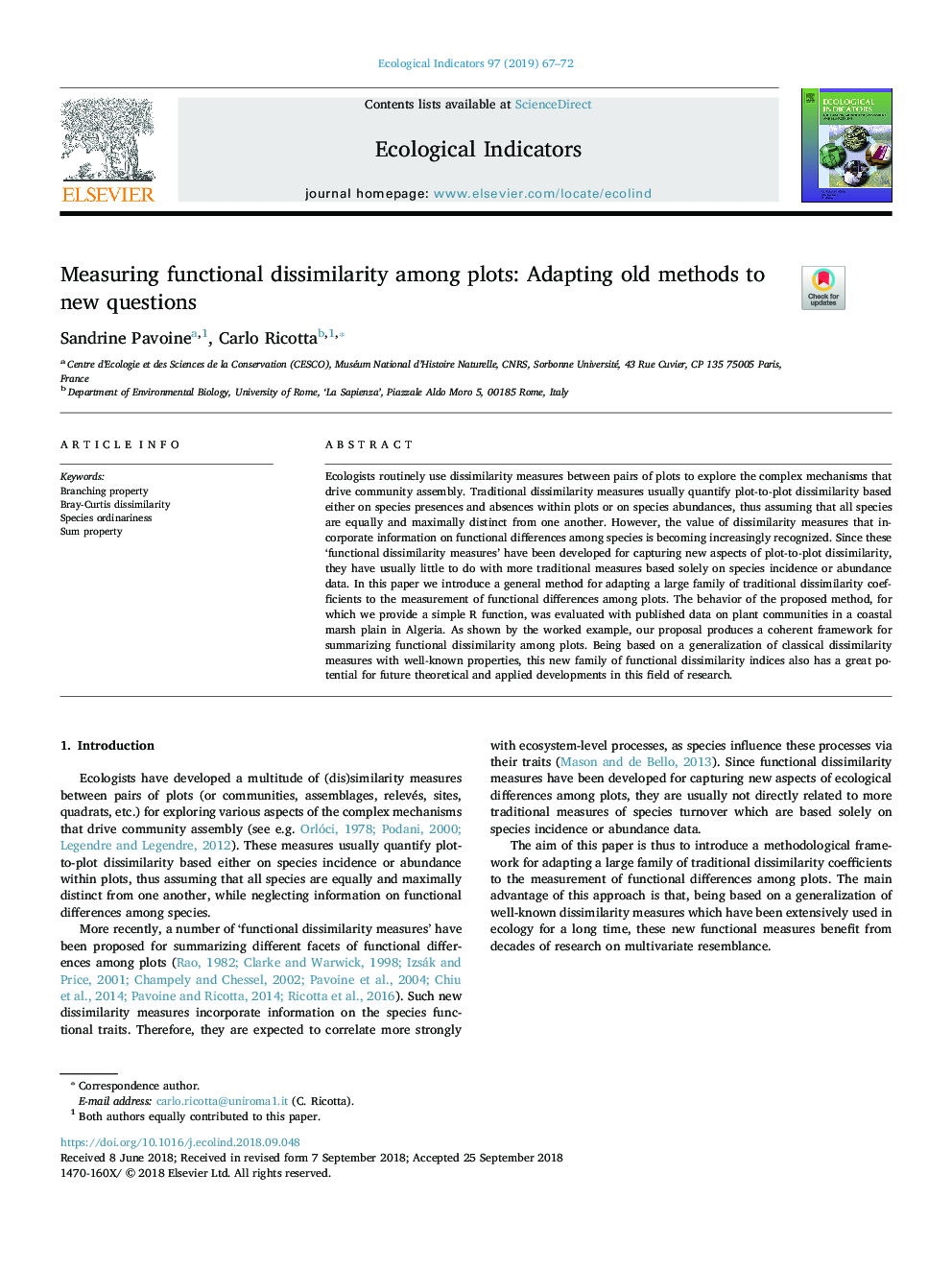| Article ID | Journal | Published Year | Pages | File Type |
|---|---|---|---|---|
| 11010269 | Ecological Indicators | 2019 | 6 Pages |
Abstract
Ecologists routinely use dissimilarity measures between pairs of plots to explore the complex mechanisms that drive community assembly. Traditional dissimilarity measures usually quantify plot-to-plot dissimilarity based either on species presences and absences within plots or on species abundances, thus assuming that all species are equally and maximally distinct from one another. However, the value of dissimilarity measures that incorporate information on functional differences among species is becoming increasingly recognized. Since these 'functional dissimilarity measures' have been developed for capturing new aspects of plot-to-plot dissimilarity, they have usually little to do with more traditional measures based solely on species incidence or abundance data. In this paper we introduce a general method for adapting a large family of traditional dissimilarity coefficients to the measurement of functional differences among plots. The behavior of the proposed method, for which we provide a simple R function, was evaluated with published data on plant communities in a coastal marsh plain in Algeria. As shown by the worked example, our proposal produces a coherent framework for summarizing functional dissimilarity among plots. Being based on a generalization of classical dissimilarity measures with well-known properties, this new family of functional dissimilarity indices also has a great potential for future theoretical and applied developments in this field of research.
Related Topics
Life Sciences
Agricultural and Biological Sciences
Ecology, Evolution, Behavior and Systematics
Authors
Sandrine Pavoine, Carlo Ricotta,
